Around 10,000 years ago, a whole host of megafauna animals became extinct at the end of the last ice age. They included giant sloths, dire wolves, mastodons, woolly mammoths, and many others. Let’s look at what happened during that time to answer the question, ‘Why did the giant sloth go extinct?’
Why Did The Giant Sloth Go Extinct?
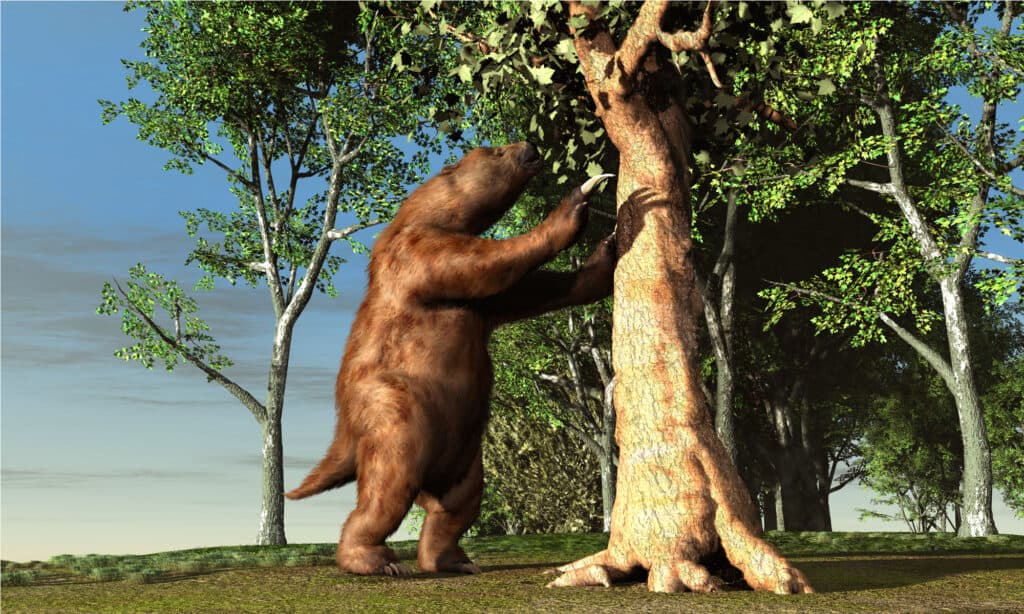
Most likely, giant sloths went extinct because the climate changed, and humans hunted them.
©Esteban De Armas/Shutterstock.com
The giant sloth Megatherium is most likely extinct due to climate change and human hunting, but scientists don’t know for sure.
There were several species of giant sloths, but the largest was Megatherium Americanum. Its name means ‘the great beast from America.’ This giant lived in South America and migrated to North America, grazing its way through grasslands and lightly wooded areas near lakes and rivers.
As the climate warmed up and it got wetter, the forests became thicker, and the giant sloths’ food sources disappeared. They also had to contend with human hunting.
In Argentina, there’s a preserved giant sloth kill site with human/sloth tracks and marks of human butchery on the giant sloth’s bones. It dates to around 12,600 BP (that’s before the present), and it’s the only proof we have for sure that humans hunted giant sloths.
When Did The Giant Sloth Go Extinct?
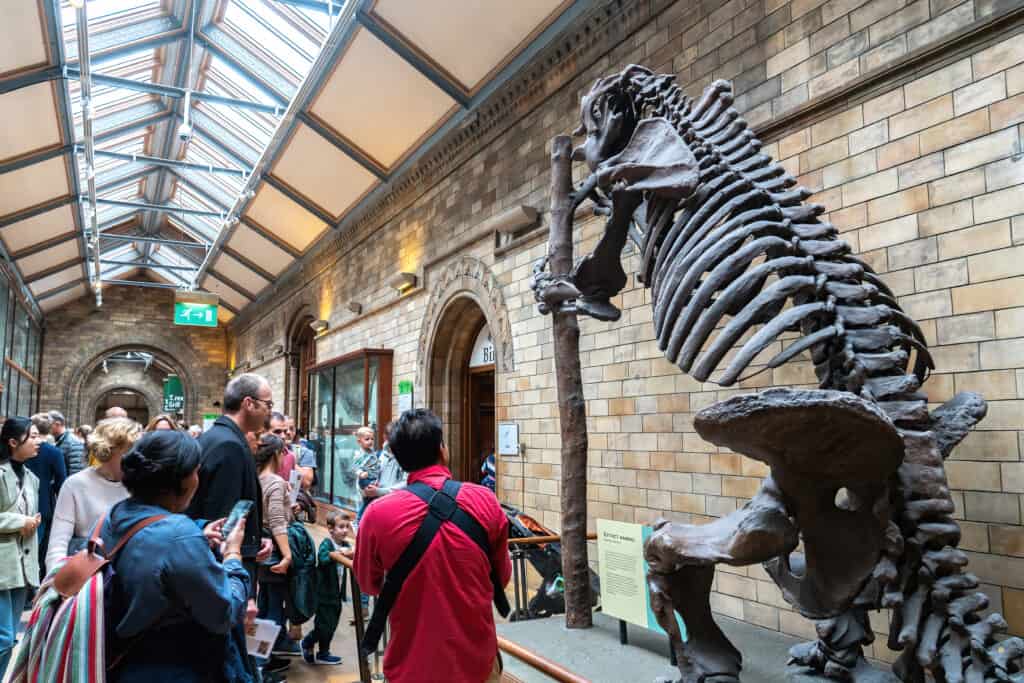
The fossil record indicates that the giant sloth lived in the Middle Pleistocene until the Holocene era.
©ShutterStockStudio/Shutterstock.com
Ten thousand years ago is the date most scientists work to.
The fossil record indicates that the giant sloth lived in the Middle Pleistocene until the Holocene era. This means it was from 400,000 years ago and died out around 8,000 years ago.
Some scientists believe giant sloths held out for longer on islands and places uninhabited by humans. Fossilized remains of the species Parocnus from Cuba have been carbon-dated to around 5,000 years ago, and the small ground sloth from Spain, which lasted a bit longer, at 4,500 years.
What Did The Giant Sloth Look Like?
They probably looked similar to our modern sloths, but much bigger. There were several species. The largest Megatherium Americanum was elephant-sized and one of the largest land animals to ever exist.
Giant sloths had pointed faces and prehensile tongues, which meant they could wrap it around selected foliage. These giants weighed 4 tons and were 20 feet (6 meters) long from head to tail. This might not sound large compared to dinosaurs, for example, but during the Ice Age, it was one of the largest animals around.
It was so long that it could reach three meters up into leafy trees, using its tail to balance as it pulled branches down with its long claws. Those claws were 7 inches long!
Interestingly, its long claws meant it probably waddled as it walked, and paleontologists have discovered a modification in its feet to counterbalance them. The heel and outside foot took the giant sloth’s weight.
Researchers think that cave art found in the Colombian Amazon depicts a giant sloth alongside other ice age animals. The rock art is 11,880 to 12,600 years old, putting it at the end of the last ice age. The giant sloth picture heavily emphasizes its long claws and small head.
Are Giant Sloths Still Alive?
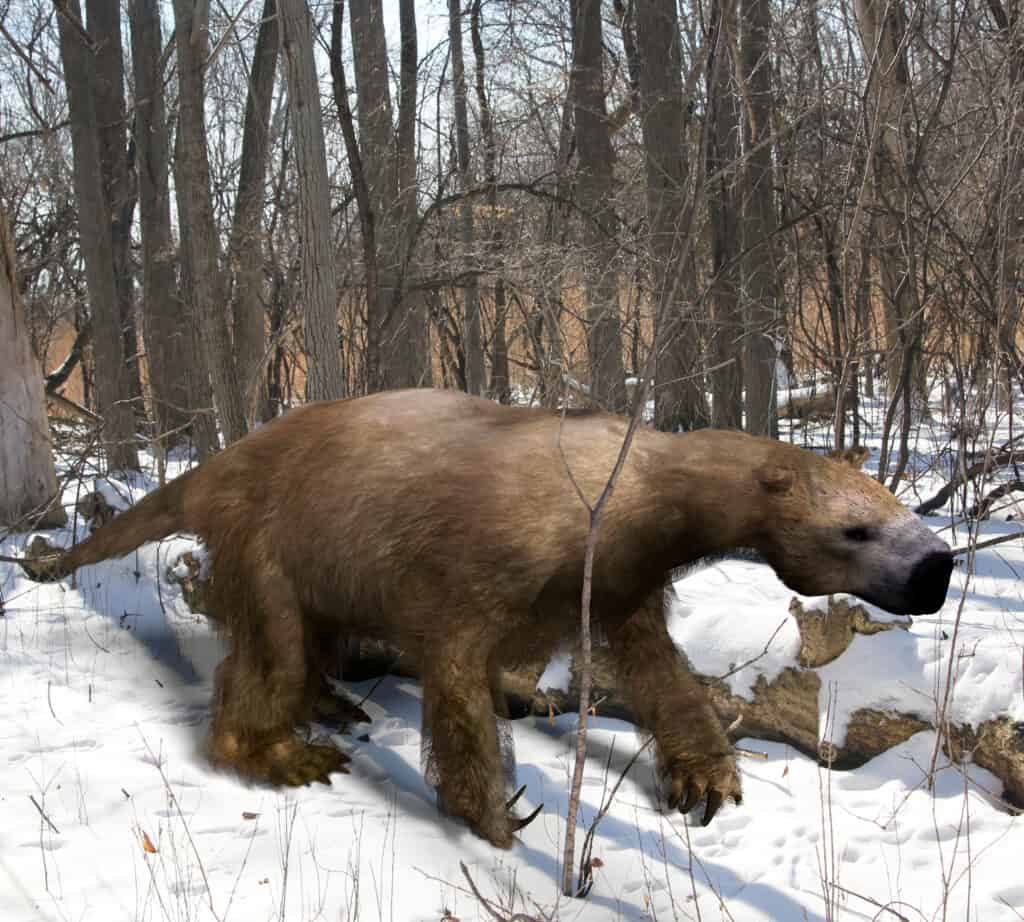
South American rainforest natives tell stories of a large beast (the giant sloth) seven feet tall with matted fur and long claws.
©Aunt Spray/Shutterstock.com
No, giant sloths have died out, but some people suggest they may still live in the South American rainforest!
Natives tell stories of a large beast that’s seven feet tall with matted fur and long claws. Its description has been passed down through generations, and they call it ‘the mapinguary.’ It’s not officially recognized and is mostly treated as a fairy tale, but the description is very similar to a giant sloth!
Today we have relations of the giant sloth. They are, of course, our tree sloths, but also anteaters and armadillos.
How Fast Were Giant Sloths?
Scientists don’t know, but because they likely waddled to accommodate their extra-long claws, they probably didn’t move very fast. This wouldn’t have helped them escape humans and could be another answer to our question, why did the giant sloth go extinct?
What Did Giant Sloths Eat?
Paleontologists think giant sloths were herbivores based on their teeth that could grind up fibrous foods. A giant sloth’s ability to reach into tall trees and its long claws that could dig up roots are other indications of a plant-based diet. But whether giant sloths ate meat is a contentious subject.
They weren’t fast enough to be predators, but they were large and strong. Some researchers think giant sloths ate meat. It could be they scavenged kills from carnivores using their sheer size to scare them off or simply discovering meaty remains as they wandered.
Where Did Giant Sloths Live?
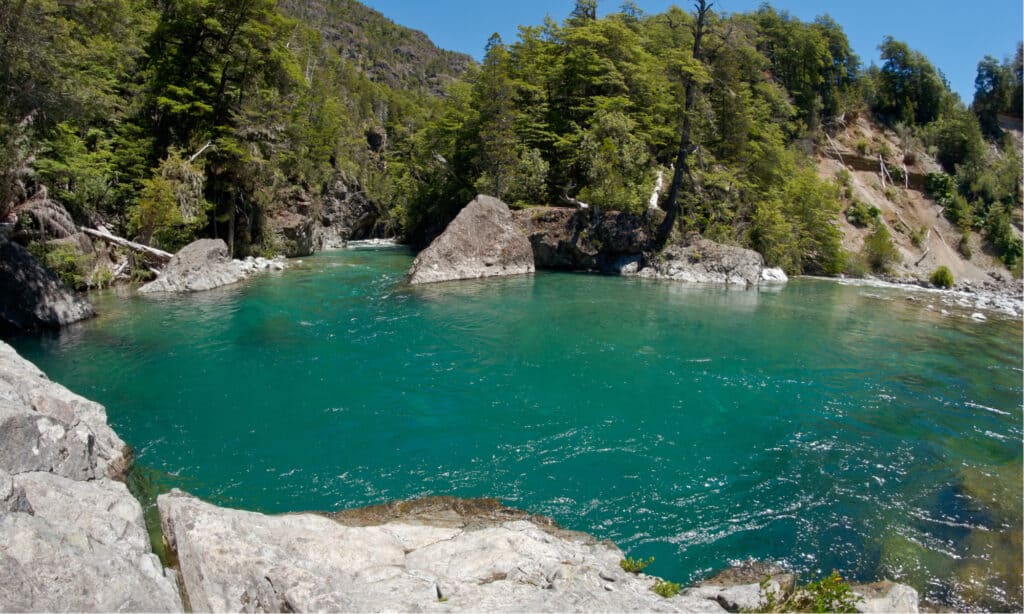
The first giant sloth fossil was found beside a river in Argentina
©Alfredo Cerra/Shutterstock.com
Remains of Megatherium are found in Bolivia, Uruguay, and Argentina, so scientists think it was endemic to South America and migrated to North America. However, it’s possible that giant sloth skeletons will be found elsewhere in the future.
Manuel Torres found the first giant sloth fossil in Argentina in 1978 on the side of the Lujan river. The fossil is on display today in the Museo Nacional de Ciencias.
What Preyed On Giant Sloths?
Probably very little, given their huge size. There were other smaller creatures with fewer claws for ice age predators, such as dire wolves and saber-tooth tigers to hunt – Mastodons, for example, or horses and deer. Unless a giant sloth was very young or injured, their sheer size probably made them difficult and dangerous to kill.
But we do know that giant sloths were preyed on by humans. Experts think their skins and meat were valuable commodities to the early human race.
Why Did Sloths Get Smaller?
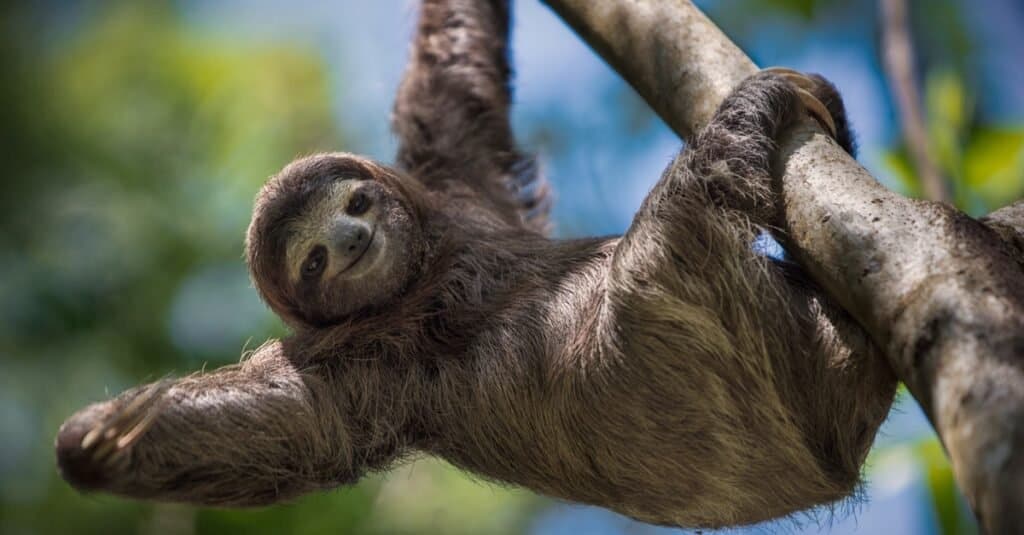
Tree-dwelling sloths survived the extinction that killed giant sloths.
©jdross75/Shutterstock.com
Paleontologists have identified at least 23 different kinds and sizes of prehistoric sloths from the fossil record.
At some point in time, the genus split into different species of sloth. Giant sloths made up the greater number of species, but smaller sloths moved into the trees.
When the ice age ended, causing damaging climate change, and the arrival of humans turned giant sloths into prey, these smaller tree dwellers hidden away in the forests were able to survive.
So why did the giant sloth go extinct? The most likely answer is they went extinct slowly as the climate changed and their habitats altered. Predation from humans probably also contributed to their decline and eventual extinction.
The photo featured at the top of this post is © Catmando/Shutterstock.com
Thank you for reading! Have some feedback for us? Contact the AZ Animals editorial team.






